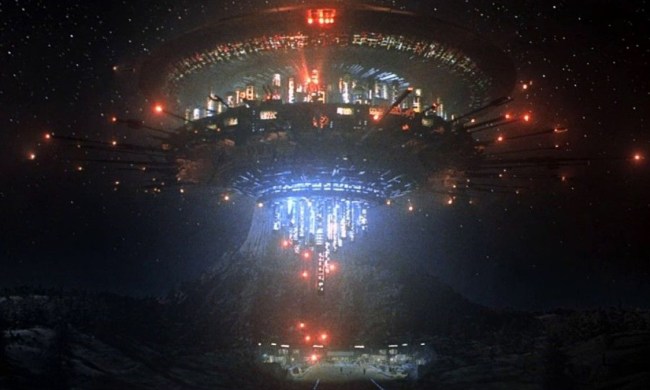Earlier this week, the family of Douglas Trumbull announced that he passed away from mesothelioma complications at the age of 79. And while Trumbull is not well known among the general public, he was a giant in the movie industry. Trumbull was a gifted special effects artist whose legacy includes some of the greatest sci-fi films in Hollywood history. Additionally, Trumbull was an inventor of new VFX techniques that pushed special effects forward in the age before CGI. To celebrate Trumbull’s life and his innovations, we’re taking a look back at his most impactful films from over 50 years of cinema.
2001: A Space Odyssey (1968)

Did you think that the display screens in 2001: A Space Odyssey were actual computer creations? If so, then you were fooled by Trumbull’s animated screens that simulated the displays that you might find on an actual shuttle. Trumbull wasn’t the only special effects artist on Stanley Kubrick’s sci-fi masterpiece, but he left his mark on it with jaw-dropping visuals. This is especially evident in the stunning stargate scene, which was brought to life through a slit-scan photography process.
The Andromeda Strain (1971)

A few years after working on 2001, Trumbull was hired to provide the special effects for the adaptation of Michael Crichton’s novel The Andromeda Strain. Trumbull and his associate, James Shourt, once again used conventional animation to create the onscreen computer displays, as well as the images of the Andromeda organism itself.
Silent Running (1972)

Trumbull’s visual mastery did not go unnoticed. That’s what led to his directorial debut on the sci-fi film, Silent Running. Bruce Dern stars as Freeman Lowell, a botanist living in space who is assigned to look over and protect one of the last forests in creation. When Freeman is ordered to destroy the forest, he rebels against his employers and lives alongside his drones while trying to protect the green.
Close Encounters of the Third Kind (1977)

Trumbull’s next major project was one of the earliest films of director Steven Spielberg, Close Encounters of the Third Kind. Most of the movie is about the ordinary people who are drawn to the landing site of visitors from another world. Trumbull’s contribution includes the visually arresting depiction of the alien ship that seems to fill up the screen. Trumbull innovated the Showscan process that allowed the ship to appear with such impressive clarity.
Star Trek: The Motion Picture (1979)

Because of conflicts with Paramount, Trumbull wasn’t involved with the production of Star Trek: The Motion Picture from the beginning. But when the previous special effects lead failed to deliver, Trumbull and his team were emergency hires who only had six months to deliver every VFX shot in the entire film. TMP is known as one of the most ponderous (and occasionally boring) films in the Star Trek canon. But no one can disparage the job done by Trumbull and his associates. The effects are beautiful, and Spock’s spacewalk late in the film has some of that 2001 visual flare. Unfortunately, the price of getting the film finished on time meant that everyone had to work seven days a week until it was done.
Blade Runner (1982)

Ridley Scott’s Blade Runner redefined the way we envision the future. Part of that aesthetic was due to Trumbull’s creation of a futuristic version of Los Angeles, complete with omnipresent advertising, high-tech buildings, and a lived-in atmosphere that made it seem all too real. If anything, Blade Runner was a little too successful with its vision, and its look has been copied numerous times in the 40 years since its release.
Brainstorm (1983)

Trumbull had to fight to complete the second film he directed, Brainstorm, following the untimely death of its leading actress, Natalie Wood. Fortunately, Wood had already filmed her entire performance as Karen Brace, the estranged wife of Dr. Michael Brace (Christopher Walken). Together with their team, Michael and Karen worked on a device that could record human memories, experiences, and emotions. It’s a powerful tool, and one that they struggled to keep out of the wrong hands.
The Tree of Life (2011)

After decades away from the industry, Trumbull returned to Hollywood to work on director Terrence Malick’s The Tree of Life. This film was shot without the conventional CGI of the time. Instead, Trumbull returned to the same techniques he had used on his earlier films, including 2001. The result was a modern movie with its own visual language and appearance. There’s nothing quite like it. And it’s a fitting end to Trumbull’s extraordinary contributions to the art of cinema.



